- Home
- Robert Graysmith
Black Fire: The True Story of the Original Tom Sawyer Page 3
Black Fire: The True Story of the Original Tom Sawyer Read online
Page 3
On Wednesday, March 30, the Daily Alta California learned that some Independence survivors had arrived on the Meteor, which was anchored fifty miles outside of the Heads. The next day at 6:00 A.M. the newspaper put out an extra: “Terrible Catastrophe!! Total Loss of the Steamship Independence and 125 Lives Lost!” and sent its reporters out into the stream to interview Sampson and Dr. Torbett, the ship’s surgeon. Boatloads of survivors disembarked at Long Wharf: “Arrival of Passengers Saved,” the paper headlined on April 1. Ultimately, Sawyer was officially credited with saving ninety lives at sea, among them twenty-six people he had personally plucked from the water by diving in after them and swimming them on his back to the beach.
Twain, floating in boiling clouds of steam at Stahle’s steam baths, had been riveted by Sawyer’s story. “Tom was a glittering hero once more—the pet of the old, the envy of the young,” he wrote in the Adventures of Tom Sawyer years later. “His name even went into immortal print, for the village paper magnified him.” He had not yet heard of Sawyer’s amazing land adventures against six city-destroying fires and the hunt for the man who burned down San Francisco six times in only a year and a half. He would. Like Twain’s fictional character and Twain himself, Sawyer liked to arrange the course of history to bring honor to himself.
Twain took a breath of the healing steam and raised his bet. Gradually he relaxed in the steam, his blood vessels dilated, his pores opened, and his blood pressure lowered slowly in the pleasant atmosphere. His pulse became regular, but his mind was aflame with the story he had heard. What a novel it would make. What a man this Sawyer was. Fire was in his veins. While he was in San Francisco, Twain intended to see more of him. Sawyer had more tales that also had the benefit of being true. “I pride myself on being a member of the first volunteer fire company ever formed in California,” he began. “It was called Broderick One …”
THE MAN WHO BURNED DOWN SAN FRANCISCO
December 24, 1849–September 16, 1850
Before [the engines] raced the most important members of the company—the torch boys holding their torches high as they ran, so that the way could be seen through the unlighted streets.
—Richard H. Dillon, Embarcadero
San Francisco’s fire problems stemmed from its overabundance of regularly formed groups of desperadoes, who would as readily burn the city, murder, rob and steal, as eat.
—David D. Dana, San Franciscan
Liberty Hose had a young adventurer—a sailor and master firefighter whose name Tom Sawyer is said to have given Mark Twain the name for his masterpiece.
—Samuel Dickson, Tales of San Francisco
When the different fires took place … bands of plunderers issued to help themselves to whatever money or valuables lay in their way. With these they retreated to their dens, and defied detection or apprehension. Many of these fires were believed to have been raised by incendiaries, solely for the opportunity which they afforded for plundering. Persons were repeatedly seen in the act of kindling loose inflammable material in outhouses and secret places; while the subsequent confessions of convicted criminals left no doubt of the fact, that not only had frequent attempts been made to fire the city, but that some of these had unfortunately been successful. Fire, however, was only one means of obtaining their ends.
—Frank Soule, The Annals of San Francisco
David C. Broderick
Broderick and the Christmas Eve Catastrophe
Tom Sawyer had known from the beginning that the fierce competition between the volunteer companies would eventually destroy them all. In 1844, when he was twelve, his job as a torch boy for Columbia Hook and Ladder Company Number Fourteen, an outstanding company of New York fire volunteers, had brought him face-to-face with the deadly consequences of such bitter rivalry. During a race between Number Five Engine and Fourteen Engine through Chambers Street to reach a fire first, one of Fourteen’s runners fell, and their 4,200-pound double-deck Philadelphia-style engine passed over him, catching him in the back with the kingbolt. As the boy lay broken and dying on the pavement, he raised his head and called out, “Go on, Fourteen!” His last words became the rallying cry of Sawyer’s company as they worked that night with the stroke pump. The pump with handles fixed on either end required seven men on each set of brakes, bars by which hand-pumped fire engines are operated. Exhausted by night’s end, they did not mind. The backbreaking labor helped them forget their sorrow.
“There’s always a crowd of boys,” one observer said, “victims of poverty and pinching and eager to earn some pennies, who vie with each other to run before the engines and hold aloft the torches that light the way.” As a boy, Sawyer’s occupations had been varied. Born in Brooklyn on January 1, 1832, he had worked in a bakery and shucked oysters in Washington Market until his fingers were bleeding. But running with the engines was his passion. At age nine he had been a signal boy for the immortal Cornelius Ruderson’s Hudson Number One and vividly recalled their firehouse in a lane (now Barclay Street) running down to the North River. It exhilarated him to race before the heavy engine to lead the way with a lantern on a pole over his shoulder. One engine company, Number Fifteen, had two teams of runners, the Fly-By-Nights and the Old Maid’s Boys, who could beat any other company to a fire. Sawyer’s Number Fourteen, known as the Wide Awake, had only fourteen men, who were pampered lavishly by their sponsors with well-furnished parlors and well-appointed bunks in an engine house under the protective wing of St. Paul’s Chapel. Being a volunteer was a badge of honor and made a man somebody. Such men who risked their lives for no pay were celebrities. Some were impersonated on stage in a series of plays.
Sam Brannan
Fourteen’s new neighbor and greatest rival was Howard Engine Company Thirty-four, named after Harry Howard, an orphan firefighter. They had relocated their firehouse on Amos Street to Greenwich Village at the northwest corner of Hudson and Christopher streets, just southwest of Washington Square. Thirty-four’s greatest volunteer was David Colbert Broderick, a gifted stone quarrier and man among men. He was darkly handsome, compact and muscular. His startling blue eyes were hidden under thick dark brows. The long line of a knife scar trailed along Broderick’s cheek. The raised scar displayed itself boldly whenever he experienced strong emotion. For that reason, he had cultivated a dark reddish beard to hide the imperfection. It was a Dutch beard with the upper and lower lip clean-shaven. He had gotten the wound not in a war but during a battle with a Manhattan volunteer fire company. “There was a natural human competition between our New York companies to turn out the quickest,” Broderick said. Engine Company Twenty-six’s battles with Company Two and Company One Hundred and Nineteen were already legendary. Broderick’s chief rival in a competing unit, Protection Company Number Five, was Davey Scannell.
Because of the tremendous opportunities for political advancement afforded by being affiliated with a firehouse, the number of New York fire companies rocketed to sixty-four volunteer units with sixteen hundred blue-stockinged, exceedingly fit municipal workers constantly on call. Men fought to arm themselves with hooks and leather buckets, to callous their hands on pump and ax handles—to pump, chop, and scorch—anything to defeat a big blaze. Such huge numbers created a system so complex that a chief engineer, responsible for the care and operation of the fire engine, was appointed.
“We had a natural inclination to be first at the scene.” Broderick continued. “Who wouldn’t want to be first to extinguish the flames? First! God help us. We had to be first!” He pounded his fist. “But this competitive urge took a violent turn. Soon it was common for Company Number Thirty-four, my squad, the Red Rovers (named after the Cooper sea tale), to fight pitched battles (we called these ‘scrimmages’) for the honor of being first to put out a blaze while buildings burned to the ground. Guns and knives were frowned on, so we fought with the tools of our trade—hose butts, half spanners [hose couplers], blunderbusses, pipes [nozzles], wrenches, pry bars, ax handles … anything handy.” A champion of weaker men,
he was a first-rate bare-knuckle boxer, with the sloping shoulders of a powerful fighter toughened by a hundred street battles. “Now my strategy back in New York was to settle the conflict as fast as I could,” Broderick said. “I would pick out the biggest guy the other company had to offer and take him on one to one—that’s how I got this”—he ran the tip of his index finger along the long, thin line trailing under his beard. “I usually got beat by powerhouses like Mose Cutter, but I rallied my men each time.” Broderick lost to the strongest the other companies had to offer. His enemies grew to respect him for standing up to them and never giving up.
Even to those who knew him best, Broderick remained a strange, extraordinary lone man who was rarely happy, often gloomy. Even in his youth he wore a savage scowl upon his face. Sawyer suspected the tough Irishman never smiled because he was in mourning. “He has no family left anywhere in the wide world,” he said. Broderick, born February 4, 1820, in Washington, D.C., was the son of an immigrant father, a gifted stonemason and ornamental worker in marble. His father had carved the huge marble columns and capitals for the east front of the Capitol Building and the Senate Chamber and finished the interior decorative work in 1834. Broderick’s family moved to New York, where his father became superintendent of a marble yard. His father, of feeble constitution, died two years later from his extreme labors. When Broderick’s mother passed away in 1843, he cared for his younger brother. A year later his brother died in a construction site explosion when a bombshell in Duval’s Foundry Yard accidentally burst.
He grew up in the roughest quarter of New York City, the notorious lower Manhattan slum the Sixth Ward, which contained the Five Points District. For five years he served an apprenticeship to a stonecutter in a yard at Washington and Barron streets. He called it one of the most laborious mechanical trades pursued by man, “an occupation that from its nature devotes its followers to thought, but debars him from conversation. I am the son of an artisan and have been a machine … I am not proud of this. I am sorry it is true. I would that I could have enjoyed the pleasure of life in my boyhood days, but they were denied to me, to my sorrow.” He cut stone with a toothless, water-and-sand-driven, soft-iron gang saw in fifteen quarries on the East Side and on the East Aspetuck River. On tougher jobs, he used a saw-toothed implement with diamonds brazed into a blade that could slice through anything. With the help of well-placed charges of gunpowder, he carved huge blocks from the quarries. While serving at a minor post at the U.S. Custom House in New York City, Broderick joined Number Thirty-four on Gouverneur Street, where he worked their side-stroke, piano-style engine (so named because of the shape of its water box). This early pumper had seven-inch cylinders, a five-inch stroke, and a gooseneck—a swivel-jointed tube in the discharge pipe that let him accurately direct a jet of water. When Broderick, widely admired for his leadership, was promoted on May 13, 1844, his new helmet emblem, shaped like a detective’s badge, was inscribed with the words “Foreman,” “34,” and “D. C. B.” arranged in a neat rectangle.
“Goldilocks,” one of the Red Rovers’ young runners, was so brightly golden haired that Broderick joked, “We’ll never need boys with signal lights when he is forefront at the rope.”
Under Broderick, the Red Rovers challenged Sawyer’s Fourteen to a “washing.” To lose at a washing was one of the worst catastrophes that could befall a volunteer fireman. To play water on a fire, the engines had to line up from the source of water to the fire, one engine pumping water into another, and so on down the line. If, in the process of transferring the water, one engine could not handle the water pumped into it by the preceding machine, it was “washed” and, in the eyes of the members of other companies, disgraced. The battle between Fourteen and the Red Rovers took place at night in Mackerville, one of the roughest districts in New York City and a common battleground for the “fightingest” Irish. It was a place of squatters, tin can mansions, and shanties around Fourteenth Street and Avenue A and Avenue B. Sawyer’s foreman, Venn, coaxed, cursed, and coddled his men for hours. A cry of “She’s up to the rabbits! She’s over!” came ringing through the cheers of the Red Rovers. They were victorious over Fourteen’s machines. Fourteen was so stunned, some men cried as they lay on the ground exhausted. The “Mackereville washing” was one of the most exciting contests of the day.
“Although his origin was lowly,” it was said of Broderick, “he felt stir within himself the forces of a strong nature. Though his associations were debased, he was not bound down by them and continued to rise year by year on the shoulders of the electors of the Ninth Ward.” He was lifted to fame by his intense personal magnetism, marvelous knowledge of men, and absolute integrity. “He learned how to work hard, handle men and get what he wanted. He was no orator, but a man made for action … a populist whose strength of character was only rivaled by its complexity.”
In 1840, Broderick had been a ward heeler for Tammany Hall, the corrupt political machine of William Marcy Tweed. “Boss” Tweed yearned to be foreman of a New York volunteer fire company in the Democratic Ninth Ward that extended to the Hudson River west of Washington Square (now Greenwich Village) and housed New York’s three most popular fire companies. Tweed joined several units before becoming foreman of Big Six, whose seal was a growling tiger painted on the body panel of their pumper. Tweed knew any political boss who affiliated himself with a district firehouse as their benefactor acquired that unit’s prestige and great influence it wielded in their community. By allying himself, he gained not only a block of local voters but also a gang of street toughs to intimidate any opposition. The volunteers, tangible symbols of his authority, cracked heads at political rallies and got out the vote for him. When Boss Tweed became New York’s “King of Corruption,” cartoonist Thomas Nast refashioned the tiger into a symbol of Tweed’s corrupt organization: the infamous Tammany Tiger. He incited such public outrage that his scathing cartoons eventually brought Tweed down.
In 1845, the electors of the Sixth Ward in the Bowery tapped Broderick to receive the Democratic nomination for Congress. As a devout Irish Catholic, he believed he could “make more reputation by being an honest man instead of a rascal.” If he was elected, he could make a difference, but he lost to a Whig.
Broderick was a man of contradictions. Though he didn’t smoke, gamble, or drink, he ran a New York tavern, the Subterranean, at the corner of King and Hudson streets, which catered to Irish laborers. Behind the bar he wore rough workingman’s clothes, the class with which he most identified, yet read the great works of philosophy and literature, especially the poetry of Shelley. At the request of Colonel Jonathan Drake Stevenson, who was raising a company of soldiers to fight in the Mexican War, Broderick sold his saloon, poured the remaining barrels of whiskey down the gutter, and on April 17, 1849, resigned from the Red Rovers. As a parting gift, his men presented him with a heavy-duty, double-cased gold pocket watch. He set out from Manhattan for San Francisco, but hostilities had ceased by the time Stevenson’s men reached the Pacific Coast. The tortuous trip crossing Central America damaged Broderick’s health and he arrived in San Francisco on June 13, penniless and sick. The first day he vowed: “I tell you, Sir, by God, that for one hour’s seat in the Senate of the United States, I would roast before a slow fire in the Square! I’ll go if I have to march over a thousand corpses and every corpse a friend!”
His friend, Fred Kohler, a forty-year-old jeweler, assayer, former alderman, and volunteer assistant engineer in New York, joined him in San Francisco. Broad, clean-shaven, with muttonchops and a long straight mouth, Kohler had the stolid demeanor of a Quaker. In the summer, Stevenson pointed out to Broderick and Kohler that although gold flowed in rivers from the mines, gold coins were virtually unattainable in the Bay Area. The only coins accepted in San Francisco as legal tender were English shillings, French francs, and Mexican double reales—all of the same value. It would be almost ten years before San Francisco would have a government assay office to buy raw gold or a mint to manufacture coin more co
nvenient than cumbersome buckskin pouches of gold dust. Kohler, who was clever with his hands, melted up the gold dust an idled Colonel Stevenson had bought west for fourteen dollars an ounce and cast it in five-, ten-, and twenty-dollar slugs. He and Broderick profited by putting four dollars’ worth of gold into a five-dollar piece and eight dollars’ worth into a ten-dollar coin. The muscular Broderick sweated before the furnace, striking coins from gold ingots, and casting and filing the slightly debased coins. As the first to coin money locally, as well as assay and stamp gold bars in their Clay Street office, they made enough by minting for Moffat and Company to retire for life. By Christmas Eve, 1849, Sawyer, who had followed Broderick to the goldfields, had been at sea for about two-thirds of his estimated five-month voyage to San Francisco. His ship, the Splendid, was battling the high waves and storms of Cape Horn. Sawyer was eager to become rich in the diggings and expected to reach the city by mid-February.
In San Francisco, Broderick awakened before dawn on December 24, 1849. He was not lonely. He had been such a beloved and charismatic figure in Manhattan that many of his fellow firefighters and political toughs had trailed him to San Francisco. Lying in bed, he considered the rains that had begun in early November and poured without cease throughout December. The early-morning stillness made him contemplative. He was independently wealthy, so what was he to do now? He limped to the window, wheezing and still recovering from the illness he’d contracted in Central America that had kept him from the mines and serving his friend Stevenson. Pulling aside the muslin curtain, he saw that the rain had momentarily stopped and the wind had faded away. The lull was a godsend.

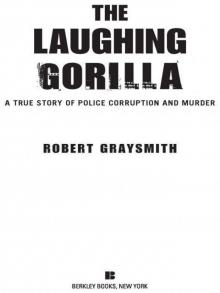 The Laughing Gorilla: A True Story of Police Corruption and Murder
The Laughing Gorilla: A True Story of Police Corruption and Murder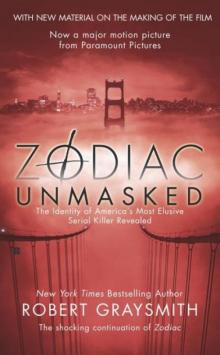 Zodiac Unmasked: The Identity of America's Most Elusive Serial Killer Revealed
Zodiac Unmasked: The Identity of America's Most Elusive Serial Killer Revealed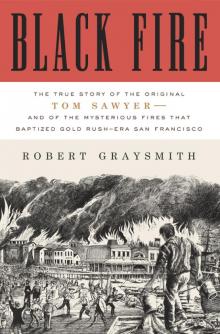 Black Fire: The True Story of the Original Tom Sawyer
Black Fire: The True Story of the Original Tom Sawyer Zodiac Unmasked: The Identity of America's Most Elusive Serial Killers Revealed
Zodiac Unmasked: The Identity of America's Most Elusive Serial Killers Revealed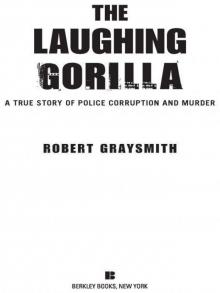 The Laughing Gorilla
The Laughing Gorilla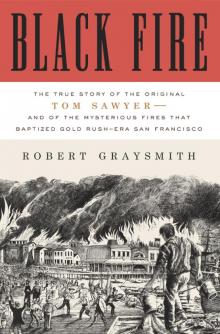 Black Fire
Black Fire